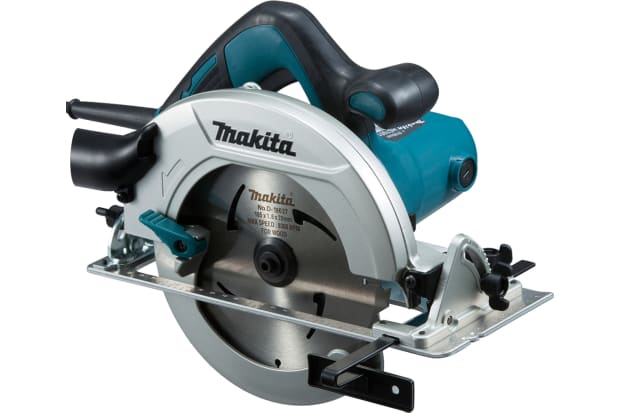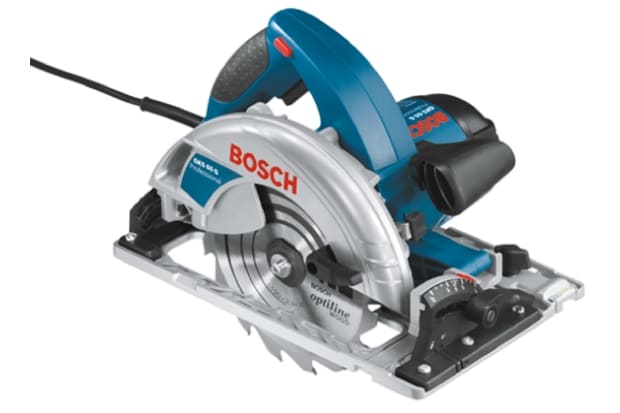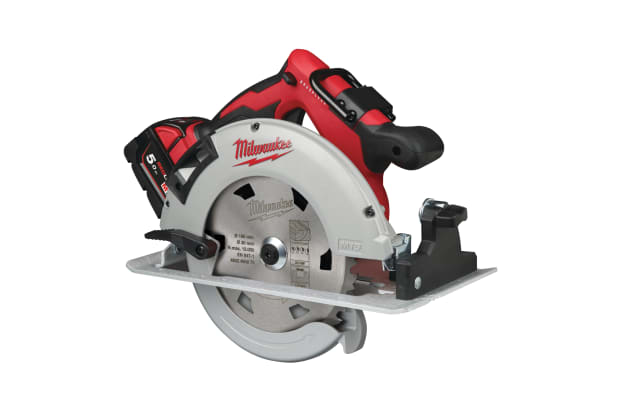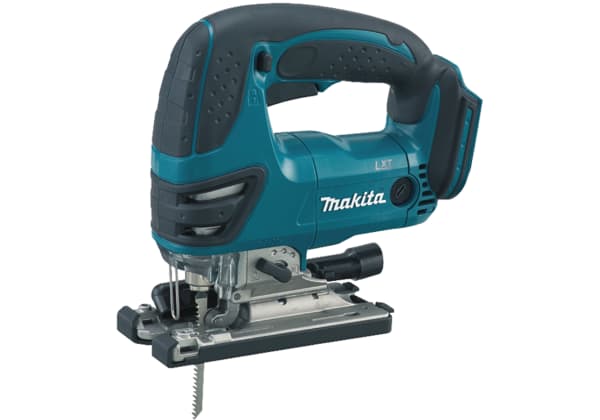- Published 24 Jan 2023
- Last Modified 27 Nov 2023
- 9 min
A Guide to Circular Saws
Our guide covers circular saws and their blades, looking at which blade to use and how to use them safely.

Circular saws are a cutting tool favoured by carpenters, joiners, builders and other professionals. The round, revolving blades, usually serrated, quickly slice through wood, making smooth rip cuts (parallel to the grain) and crosscutting (perpendicular to the grain). They are also used to cut cement board, plastic and panelling, while specialist blades can be fitted for metal, masonry and other hard substances.
Circular saws are more energy-efficient than conventional saws because their cutting motion is continuous. On traditional reciprocating saws, by contrast, the cutting strokes alternate with return strokes.
First devised in the 18th century, manual circular saws quickly became a popular choice for cutting wood and were standard equipment in sawmills. Nowadays, most circular saws are electrical power tools, noted for their versatility, ease of use and considerable cutting power. Hydraulic models are also available, and some saws have additional features such as electric brakes or laser guides.
Both built-in desk-mounted and handheld designs are available, with the latter also known as electric hand saws. The motor used in the latter is typically 1-2 horsepower, with the blade wheel spinning at around 5000 revolutions per minute (rpm). Operators can adjust the blade depth and angle of the cut (from 90° to 45°, for example).
Electric models typically feature sturdy insulated casing and either a fixed or retractable blade guard, but caution and proper training are essential for safe use. Users should wear personal protective equipment (PPE) such as visors and gloves when operating power tools.
What are the Best Circular Saws for Each Job?
A variety of circular saw types are available, each designed for different tasks. Standard, wood-focused handheld models are known as sidewinders. Alternatives include:
Mini Circular Saws
Mini circular saws are compact, light, highly portable and often cordless models designed for smaller tasks where the use of a full-size circular saw is not necessary. They are ideal for working in confined spaces and typically include the same feature set as the larger models.
Cordless Circular Saws
Power cords are a potential tripping hazard and also restrict the movement of the tool operator. Cordless saws incorporate rechargeable lithium-ion (Li-ion) batteries as their power source for a significant increase in manoeuvrability and flexibility.
Circular Table Saws
These corded saws feature a sturdy base plate and are built into work tables and benches, with the blade protruding. How do you use table saws? Rather than moving the saw across the material to be cut, you instead hold the material and move it across the blade. This is a versatile solution for cutting wood.
- Worm drives: these have their engines mounted behind rather than next to the blade, providing a clearer view for the operator, as well as more cutting power. They are ideal for longer, deeper cuts
- Hypoids: these have a similar design to worm drives, but they run more quietly because they feature a greater number of mechanical rather than electrical components. They are a good choice for cutting hard or damp wood
- Abrasive saws: these feature flat blades without teeth and are designed for use with tough materials like concrete and tiling
- Mitre saws: this design is based around a radial arm that is lowered onto the target material. They are both safer and easier to use than other handheld models and are an effective choice for cutting wood quickly
- Concrete saws: also known as grinders, these heavy-duty models have large and powerful blades with teeth made from industrial diamonds or similar materials. Despite the name, they are also an effective cutting solution for cutting through masonry and similar materials
- Metal cutting saws: these circular saw models are specifically designed for working with metals. Typically, they feature more robust guarding to protect the user from sparks
Popular Brands
Choosing the Right Circular Saw Blade
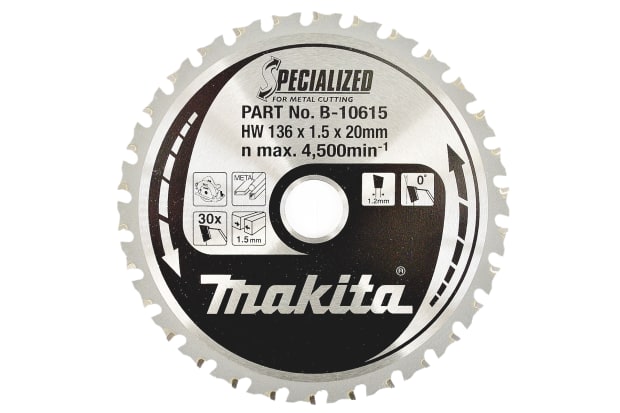
In addition to specialist models, UK tool vendors offer a variety of blades to optimise general purpose circular saws for different materials. If you will be working with one substance for a significant period, a specialist circular saw model might be the best choice. On the other hand, if adaptability is a higher priority, a different blade is probably more sensible (and cheaper).
You should also consider the following factors:
- The number of teeth: more teeth will increase the speed and precision of your cut, but remember that the number of teeth per inch may not be any higher on a physically larger blade
- For a higher level of cutting power, choose a blade with a positive rake - a blade that slopes away from its cutting edge on the inner side
- The width of the cut (the kerf) you will need. A finer cut from a thinner electrically-powered blade will encounter less resistance from the surrounding material but may cause the blade to wobble and obstruct progress
Look at the manual provided with your power saw. To buy a new saw blade, you will need to know:
- The right blade diameter. Typically, between 110mm and 185mm blades are required for handheld saws
- The correct size of the centre hole (the arbour): this will normally be between 10 and 30mm in size
- The depth of cut you need
- The RPM rating - i.e. the speed at which your device rotates (measured in revolutions per minute or RPM). For safety, only buy circular blades with an RPM rating higher than this
Ensure your blades are well maintained. Inspect them for damage regularly and oil them whenever necessary.
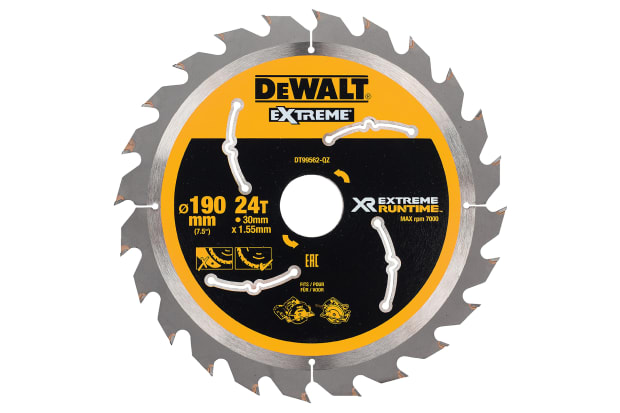
Circular Saw Blades for Woodworking
Blades designed for general use can be quite versatile, but for best results with wood, look for blades made from high carbon steel (HCS) or high-speed steel (HSS).
For harder lumber as well as plywood, tough carbide-tipped blades will be most effective.
Circular Saw Blades for Metal Cutting
Blades designed for cutting metal are typically made from carefully calibrated carbide-steel alloys.
How to Use a Circular Saw
Circular saws are highly versatile tools that will cut straight through most materials if used correctly. Here is a basic guide to circular saw use:
- Mark the planned cut line along the target material using a tape measure, ruler or similar device. Make sure this is accurate to avoid waste. On darker materials, masking tape can also be used to mark the line of your cut
- Check your lighting. A clear view of the target material and your saw is vital for a smooth cut and the avoidance of accidents
- Clamp the target material firmly in place if you plan to make any angular cuts. For larger pieces of material, an insulation pad may be a better choice. If your material includes veneer (e.g. plywood) place this face down so it does not break off during the cut and obstruct progress
- Put on your personal protective equipment (PPE): a mask, visor and ear defenders are standard for circular saw use
- Switch on your saw and begin the cut
- As the cut progresses, focus your attention on the blade rather than the guide marks at the front of the saw, as these often become worn with use or obscured by dust
- If cutting through hard materials like stone or masonry, ask an assistant to hold a slow-running hose to the cut. The water will cool the blade and cut down on dust and debris
Circular Saw Safety Tips
Electric circular saws are powerful tools and can be dangerous. Use the following circular saw safety checklist:
- Pay close attention to cables and leads which may present a tripping hazard. Make sure none are dangling in areas you are likely to move into while operating the saw
- Ensure the item you are sawing is properly secured to your desk, using clamps and supports. This will prevent the work piece from sliding or slipping as it is being cut
- Never use a dull blade. Make sure your blade is sharp and in good condition before switching on your saw
- Test the retracting guard blade to ensure it moves correctly during the cut
- Ensure that any offcuts or waste material will fall cleanly away from the blade. This is especially important if you are left-handed because you will be holding the tool differently to your right-handed colleagues
- Watch for the kickback or recoil when you first begin to cut. Make sure you are ready for this. Stand slightly to one side so you don’t lose your footing
- If you are cutting wood, check for any embedded nails. These can cause kickback and damage the blade
- While cutting, keep your eyes firmly fixed on the saw. Never look away
- Wear appropriate protection. This includes a safety visor and mask to protect yourself from dust and debris. Ear defenders will protect your ears and dampen the noise produced by the saw
- Store your circular saw safely when you have finished using it
What are Common Hazards When Working with Circular Saws?
Like all power tools, circular saws can cause serious injury. Here are some of the most common hazards to watch out for:
- Trips caused by dangling cables
- Chips, dust and debris flying into the operator's eyes if safety equipment is not worn
- Sparks - a particular hazard when cutting metal
- Unexpected obstacles in the path of the blade - for example, nails in wood
- Lapses of attention by the operator
- Mechanical failure
